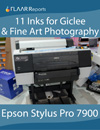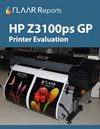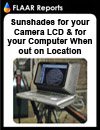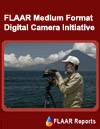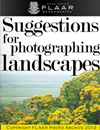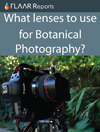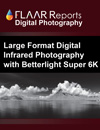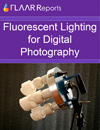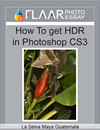IQ4 medium format digital back on XF Phase One camera
In past years Hasselblad, Leaf, Kodak, Sinar, and Phase One have provided cameras and/or digital backs for us to use so that we could test them (most "reviews" on the web are not based on actual use; we prefer to have the camera with us out in the field in a real field trip). So I have experience with competing brands for over a decade.
Plus FLAAR is unique among photographers because we have access to wide-format inkjet printers of 3.2m and 5meter width. Durst has brought me to their printer demo centers in Europe many times (five times to northern Italy and four times to nearby southern Austria). Here the immense quarter-million dollar Durst Rho printers test-print the results of my medium format cameras.
What other review network has access to 3.2m and 5m wide-format printers?
 |
|---|
So as soon as I have access to the Phase One cameras and backs, I can get gigantic images printed. This is a rather effective manner to show the world what a medium format camera can do (we have about 700,000 readers of our wide-format inkjet printer review network; and another well over half-a-million readers of our flower, bird, photography web sites and digital photography and cultural heritage web site (Google mayan archaeology and see whose web sites come up nicely: www.maya-archaeology.org). Google mayan plants and you will find our www.maya-ethnobotany.org (showing our photography of tropical plants and flowers of Guatemala, Central America).
Trichromatic, IQ4 and IQ3
Phase One is dedicated to not just making a "camera" but instead they prefer to offer a total solution. Since all of us photographers have our independent preferences, Phase One offers options, in this case their Trichromatic. The goal of this camera is to provide the best true color possible.
I can still remember photographing in the 1970's through 1990's: Kodachrome film offered reliable color; Fujifilm offered pumped up green (grass and trees) and overly blue (sky). In other words, Fujifilm (film) was oversaturated and not realistic (but many clients wanted this kind of deep fake color). I prefer honest color.
When the Phase One instructor, Murray Elliott, explained the trichromatic system, I was very tempted. The 150 megapixel IQ4 is what I would need to photograph jungle ecosystems from a helicopter. But to photograph flowers and colorful bromeliads, the 101 megapixel trichromatic option is definitely something I would enjoy testing out in the field. Ideally would be to have both cameras together on a field trip to compare them for every subject and diverse situations (and if I win the Lottery, buy one of each!).
Phase One XF camera system
One of many reasons that Phase One has surpassed Hasselblad is that Phase One has innovative digital solutions every several years. But the key reason is that Phase One realizes the key to success is firmware (operating system) and photo processing software (Capture One).
Canon and Nikon rose to the top of 35mm DSLR digital cameras because they offered a total solution. Leica offered status and "brand." But if you wish to be a successful photographer your daily work must be productive: Canon and Nikon have millions of followers today in the digital world. I started with Leica in 1961 and had three Leica 35mm cameras in the 1970's onward (but never bought one with a mirror because Leica bumbled that attempt; Nikon and Canon beat them). But with 35mm it really was the lens (glass) quality (which is why I stayed with Leica in the 1960's into 1990's). But today I use only Nikon and Canon (because for bird photography I need 300mm, 400mm, 600mm, and 800mm prime telephoto lenses). To photograph tropical flowers high in the tree tops of the Neotropical seasonal rain forests of Guatemala all these super-telephoto lenses are needed also.
But for a panorama (joining together multiple photos), a Phase One digital back on a Cambo WRS-1600, turned sideways to get vertical format, will beat any 35mm (especially now that GigaPan systems no longer function since the Chinese batteries don't charge well and fail after one or two GigaPan sequences).
The Phase One XF camera system with 240mm lens is what we need to photograph from a helicopter to record the ecosystems that we have discovered. We have hiked far into the rain forest, where no university botanist or botanical garden botanist has ventured. We have documented a savanna; where the giant trees stop at the base of a hill and you see several kilometers of grassland.
This is where we do most of our photography today: an awesome place to test cameras, lenses, flash equipment, tripods, and every other essential equipment. We have found aquatic orchids; yes, orchids (Bletia purpurea) growing on the roots of reeds floating offshore around Lake Yaxha. Senaida Ba found another species of water-related orchids in a swamp at the edge of the Savanna of 3 Fern Species.
These fragile ecosystems are endangered, so to record them with the quality possible by a Phase One IQ4 from the air and a Trichromatic system with 120mm Schneider or comparable lens up close. The 55mm lens would be best for panorama photography (we are using iPhone Xs and Google Pixel 3 XL for our web site, but you can't enlarge these with a 3.2 meter printer or a 5 meter printer: need the Cambo WRS-1600 with Schneider or Rodenstock 55mm lens for panorama photography.
Phase One training was by Murray Elliott at Boullivant Gallery, St. Louis, MO
 |
|---|
| In the background you can see part of the ample facilities of Bullivant Gallery. We would like to add photos of their Cultural Heritage Preservation capability in the future and test their ability to upgrade aging Macintosh computers (which we have several of to power our equally aging Creo, Creo Scitex flatbed scanners (these were the best flatbed scanners ever made). |
www.BullivantGallery.com and www.CulturalHeritagePreservation.com are two ways to get in touch with Robert Bullivant. His facilities in St. Louis was the location of the Phase One camera presentation meeting. He and his team do fine art printing plus, cultural heritage scanning for preservation. Also he can restore your old Macintosh computer.
 |
|---|
| Murray Elliott is second from left. Robert Bullivant is at the left. Nicholas towards the right, Camila Morales at the right, videographer at the St Louis company anima.works. |
www.megapixelsDigital.com is how you can make contact with Phase One source, Murray Elliott. He was the knowledgeable instructor on Phase One, Cambo and other components for medium format digital cameras.
What happened to Hasselblad in the era of Medium Format Digital camera backs?
I had three Hasselblad cameras in the 1970's, 1980's, and 1990's. Why, today (2019 going into 2020) am I no longer even considering a Hasselblad digital camera any more?
I will be discussing this in an upcoming page on this digital photography web site. Hasselblad was the Mercedes-Benz, the BMW, the status camera for decades. Leica was the equivalent for 35mm film (I also had three of them for 35mm film).
I used 4x5" Linhof and 8x10" Linhof as well, so from experience I can discuss the capability (in those decades) of Hasselblad with its Zeiss lenses (in those days not only designed in Germany but also manufactured in Germany).
But for "full size", full-scale medium format, today the better than Mercedes, the better than BMW is Phase One, in part due to its Capture One software.
Another benefit of Phase One cameras today is that they work together with German lens engineers of Rodenstock and Schneider.
What about Fujifilm medium format?
Fujifilm GFX 100, mirrorless, 102MP, 43.8 x 32.9mm BSI CMOS Sensor, for only $9,999.95.
Fujifilm GFX 50, mirrorless, 51.4MP 43.8 x 32.9mm CMOS Sensor, $3,999.00
So far nothing about either of these cameras impresses me because they don't have the dedication to medium format that you get with Phase One. Plus Phase One offers Capture One software. "You get what you pay for" and I would rather buy a Sony A7R IV with 61 Megapixels that is lightweight and has plenty of lenses than a non-ergonomic Fujifilm. But surely there will be a Version 2 of the Fujifilm GFX camera, that that would be tempting.
Is a Pentax 645Z Medium Format worth considering?
51.4MP CMOS Sensor - 43.8 x 32.8 mm, $4,996.95
Best way to answer this question is to note that the new Sony mirrorless A7R IV is 61 megapixels for less than $3500. Pentax will have to offer something to make anyone tempted to try their system since so many other alternatives exist.
Final Comment on the Phase One XF IQ4 camera system
We have broncolor Siros 800 battery operated lighting so we can illuminate flowers high up in a tree (most of our photography is in the rain forests of Guatemala). With my Nikon D5 and a 400mm, 600mm, or 800mm lens this Made in Switzerland Broncolor Siros 800 illuminates tropical plants up in the treetops: bromeliads, orchids, arboreal cactus, etc.
But when the wind is blowing, the leaves up in the trees are moving, yet flash on a Nikon can't shoot more than 1/250th of a second. To photograph a bird in flight we use 1/2000th or 1/3000th (see our www.Maya-ethnozoology.org web site). But that we do with no flash.
The brochure of the Phase One XF camera system says that with a lens with leaf shutters the flash sync speed goes up to 1/1600th of a second. Guess what, lenses of Schneider Kreuznach have leaf shutters.
And, the Phase One XF camera system works together with Profoto Air, a flash remote control system. It's ironic that in a tropical rain forest, with bright sun overhead, that with the mighty forest canopy over your head (high high above), there is not much light below the tree tops.
So lots to see at Photokina 2020.
First posted: August 2019.
Free Reports (Inquiry Form)
Additional links of our FLAAR sites |
| Rigid Printable Materials |
| Printing on Glass |
| Sandwich board for recyclable furniture! |
| Metallic Effects |
Free Download Reports
| Home | About Us | Consulting | About FLAAR Reports | Site Map | Privacy Statement | back to top | |||||
|
|||||||||||
www.digital-photography.org is part of the FLAAR network © 2001-2021. If you notice a bad link, missing photos, misspellings, please report to the webmaster: |
|||||||||||




